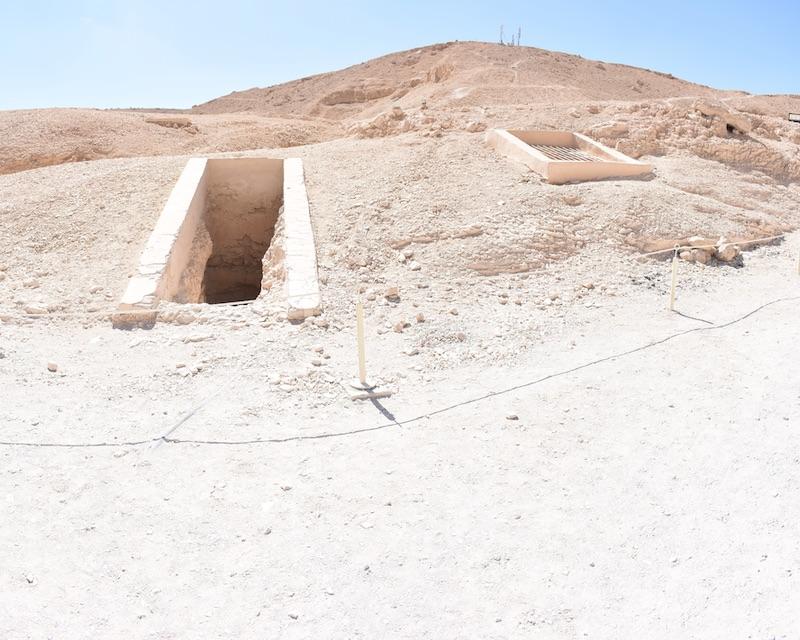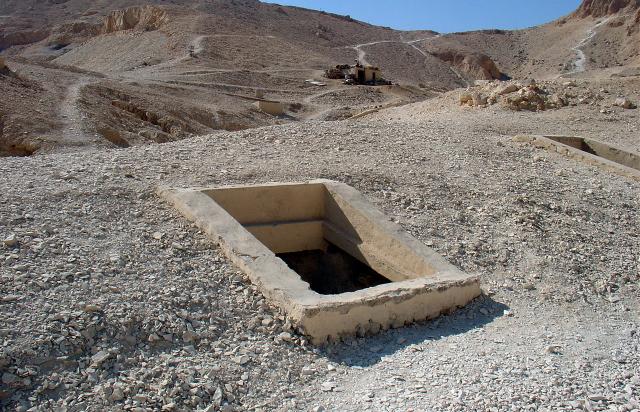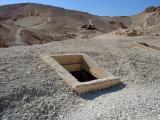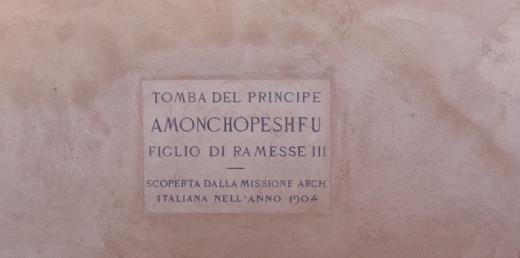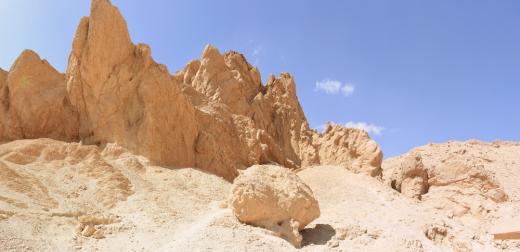QV 10
Anonymous
Entryway A
See entire tombShaft entrance has a modern built surround with cement plaster and no metal grill or mesh.
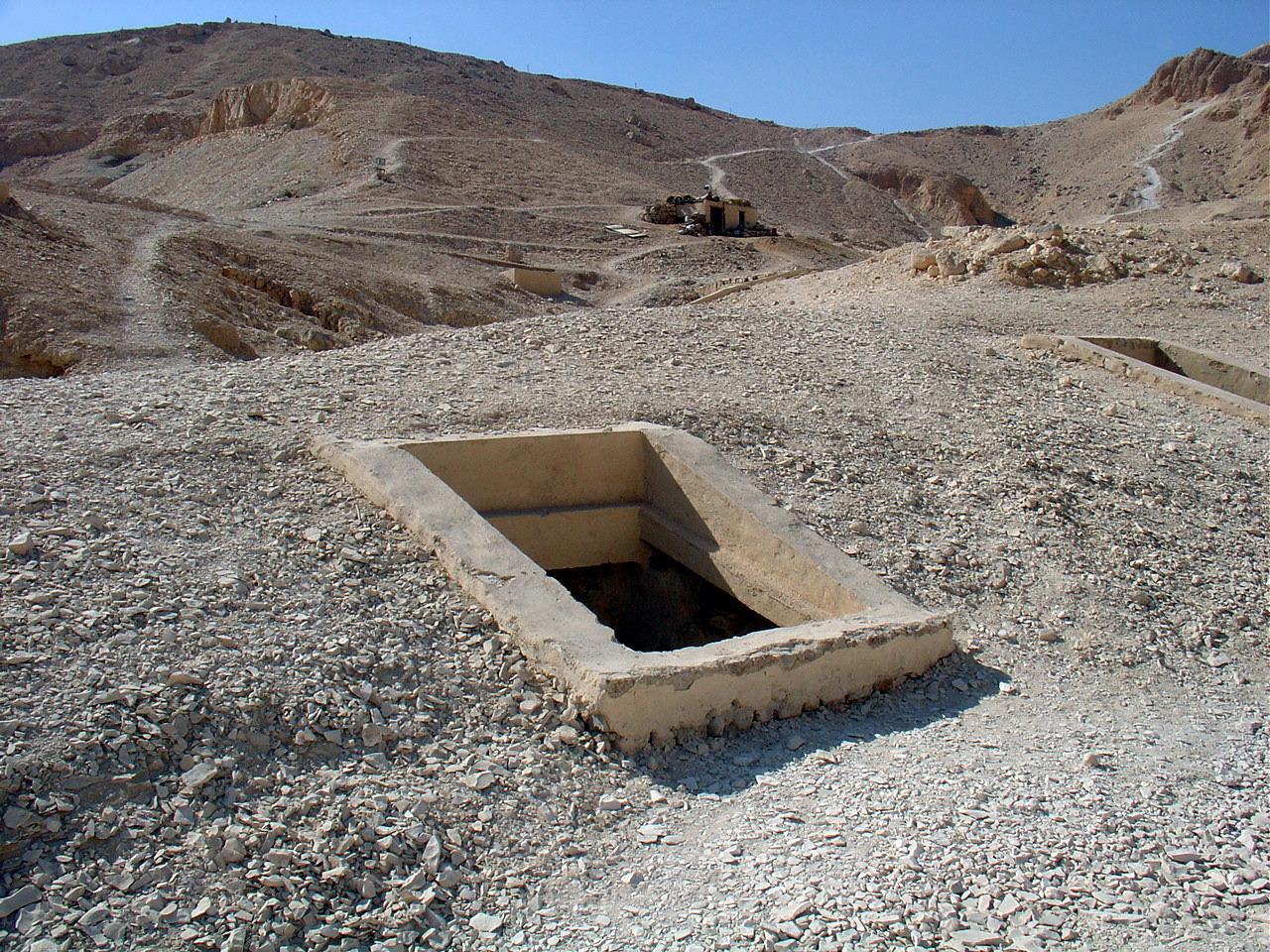
Burial chamber B
See entire tombUndecorated burial chamber.
Chamber plan:
RectangularRelationship to main tomb axis:
ParallelChamber layout:
Flat floor, no pillarsFloor:
One levelCeiling:
Flat
About
About
QV 10 is located on the south side of the main Wadi, between the paved path and the higher footpath to the south. The tomb has one chamber (B) and the shaft entrance (A) has a modern built surround with cement plaster and no metal grill or mesh.
Elizabeth Thomas recorded that QV 7 to QV 10 are all similar in layout. The last clearing of the tomb was conducted by the Franco-Egyptian team in 1985. It has been dated to the 18th Dynasty and the finds included a mirror handle, part of a staff covered in pink leather, and glazed blue Faience hair beads. The tomb was also reused substantially in the Third Intermediate and Roman Periods. Avian mummies placed in Roman period vases were discovered in the tomb.
Site History
The tomb was constructed in the 18th Dynasty and reused substantially in the Third Intermediate and Roman Periods.
Dating
This site was used during the following period(s):
Exploration
Conservation
Site Condition
According to the GCI-SCA, the tomb generally appears stable. QV10 is cut into mixed marl types, with its shaft cut largely into marl but reaching shale layers near the bottom. The main chamber of the tomb is cut into interbedded layers of marl and fractured shale. Trash littered the bottom of shaft. Bat urine and droppings were observed in areas of the ceiling of QV 10 by the GCI-SCA. The tomb opening is susceptible to flooding, and the shale of the main chamber is particularly susceptible to damage resulting from flood.



Articles
Tomb Numbering Systems in the Valley of the Queens and the Western Wadis
Geography and Geology of the Valley of the Queens and Western Wadis
Bibliography
Demas, Martha and Neville Agnew (eds). Valley of the Queens. Assessment Report. Los Angeles: The Getty Conservation Institute, 2012, 2016. Two vols.
Lecuyot, Guy. Les tombes VdR 9 à 13 de la Vallée des Reines. Memnonia, 3 (1992): 89-129.
Macke, André, Christiane Macke-Ribet, Christian Leblanc, and Jacques Connan. Ta set neferou: une necropole de Thebes-Ouest et son histoire: momification, chimie des baumes, anthropologie, paléopathologie. Vol. 5. Cairo: Nubar Printing House, 2002.
Thomas, Elizabeth. The Royal Necropoleis of Thebes. Princeton: privately printed, 1966.
